Media | Articles
The Capri Was Europe’s Mustang
Ford’s decision to resurrect the Capri nameplate on an all-new battery-electric crossover for the European market makes a great deal of sense. Crossovers are what most people buy, even in the Euro market, and while large-scale EV adoption is taking longer than most thought, it’ll probably happen quicker on the other side of the Atlantic. By putting the well-recognized Capri name on a family-oriented EV, Ford gets to put out a new model with a familiar name. Ford doesn’t need to worry about any legal difficulties with branding, as Capri is an in-house nameplate, and the vehicle will perhaps tweak a bit of nostalgia.
Of course, none of that reasoning makes us like Ford’s decision—certainly not from behind the wheel of a 1974 Capri GT, as the car bursts out of a corner exit on a winding mountain road in Canada. Call it a mini-Mustang, call it Europe’s pony car—this is the genuine article, not a battery-powered platform borrowed from Volkswagen and shot with some heritage botox. This is the real Capri, and it’s utterly fantastic to drive.


The personality of the Capri GT is largely due to its parts-bin underpinnings, which were mostly lifted from the Mk. II Cortina. (Though it is perhaps a less-familiar badge to a North American audience, the Cortina did much to stoke the flames of Fast Ford enthusiasm across the pond.) The mechanicals of the Capri are as simple as they come: engine up front, four-speed transmission in the middle, drive axle out back. The suspension is Macpherson struts in the front and a live axle in the rear, with rack and pinion steering.
What other two-door sedan with everyday roots turned out to be a cultural icon? The original Mustang may have been a grand slam compared to the Capri’s Premier League overtime goal, but both are sporting heroes in their own right. They both offered a range of engine choices, were accessibly priced for a broad audience, and had everyday appeal along with a dash of performance.



The similarity between the pair is no accident. The mission of the Capri was to be Europe’s Mustang, and the same designer was involved in both projects, the Iowa-born Phillip T. Clark. In fact, Ford Europe’s little coupe would have been called the Colt, had not Mitsubishi (and, by extension, Plymouth) owned the rights to that name.
Marketplace
Buy and sell classics with confidence
Instead, the European coupe was dubbed Capri. The name came from a two-door version of the Ford Consul, itself a scaled-down version of a large American coupe—call it the Thunderbudgie. “Capri” was also something of a match for “Cortina”; both names had Mediterranean origins.
The Capri launched in early 1969 and was built in the UK, Belgium, and Germany. In North America, it was sold with the same name but under the Mercury brand, wearing four round headlights and the power bulge hood. (Elsewhere, you could buy a Mk I Capri with a flat hood and square headlights, which looked fairly stuffy by comparison.) Trim levels ranged from poverty spec to near-luxury, but the average Capri was priced to be within the budget of the average person.



The range of engines across all markets is frankly overwhelming—eventually, the Capri was also sold in South Africa and Japan. The most common option was a four-cylinder, which came in displacements from 1.3 to 2.0 liters. There was also a handful of V-6s. One rare standout was the Capri Perana (a deliberate misspelling, for copyright reasons), built by Basil Green Motors in South Africa. These first came with a V-6, but later were fitted with the 302-cubic-inch Windsor V-8 out of the Mustang. The Capri is not a large car, but there was enough room under its long nose for hot-rodders to cram a number of Ford V-8s in there.
Arguably, the engine you want is the V-6. This orange example is a 1974 Capri GT. It wears the earlier bumpers, giving it a cleaner look. Under the hood is a breathed-upon, 2.8-liter, narrow-angle Cologne V-6. When new, in the German-built cars sent to North America, the six offered an unremarkable 119 hp, but these engines are very tunable. Here, with a hotter cam and a few other tweaks, roughly 180 hp is on offer.




In your author’s eyes, the car is just about perfect. Its owner, Geoff Peterson, has a local reputation as a VW specialist (he’s shared his 200-hp Cali Look 1957 drag Beetle with us in a previous article), but he’s always wanted a Capri. When he bought this one, the car wasn’t running, so he fixed it up as a fun daily driver. He plans to do further adjustments here and there, but with the suspension sorted out with poly bushings, and a replacement driver’s seat and dished steering wheel, the Capri drives as good as it looks.
Capris are prone to rust, even in relatively dry locations, so finding them in complete condition is tricky. Ford sold an enormous number of these cars in the U.S. and Canada—something on the order of half a million—and most of them got chewed up by a third or fourth owner and sent to the scrapyard. Petersen says this car gets even more attention and stories from previous owners than his Beetle or Dune Buggy does. It’s impossible for him to stop for gas without talking to at least one person.

Happily, these impromptu discussions have led to a couple of project cars that Petersen has been able to find and rebuild for new owners. Parts for the Capri are relatively available, thanks to how strong their following is across the Atlantic. Used stuff and bodywork are tricky to find, but if you’re willing to pay, a proper restoration is certainly possible.
Like the Mustang, part of the Capri’s appeal is in its long motorsport pedigree. The excellent book Capri, by Jeremy Walton, breaks down these exploits, with some 300 pages of detail on Ford’s European battles with the likes of BMW and Porsche. During its heyday, Capris campaigned on iconic tracks from the Nürburgring to Spa-Francorchamps to Le Mans. Jackie Stewart raced a Capri. So did Niki Lauda.
Names like Zakspeed and Cosworth came to be associated with the hottest Capris on the track, and there were fierce and very collectible road-going models in the European market. A single Capri RS2600 was ordered in 1971 by the Deuce, Henry Ford II, for his son Edsel II to drive to college. It was finished in two-tone silver and blue, and paired a 150-hp, 2.6-liter V-6 with a curb weight of 2250 pounds.

But while the special and racing Capris are fun to learn about and obsess over—a Mustang’s worth of history and heritage, seen through a European lens—what really makes the original Capri such a delight is its simplicity. The new Capri is emblematic of its time. Roomy, fast, comfortable, and silent, it is competence delivered with all the charisma of a toaster oven. The old Capri is small, loud, quick rather than fast. With the four-speed manual, 40 mph feels like 100.
Shortly after our spin on the mountain, Peterson climbed into his Capri and drove it about 250 miles into British Columbia, searching for parts for his latest project. There’s a Capri that makes sense for the world we live in—but there’s another Capri that inspires love, and it doesn’t have a charging plug.

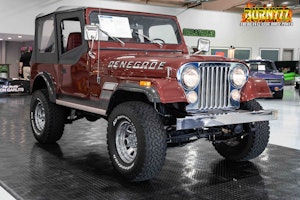

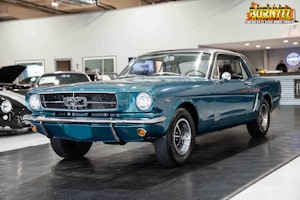
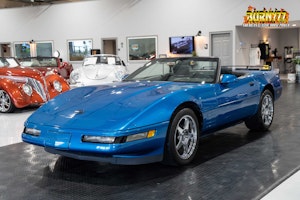
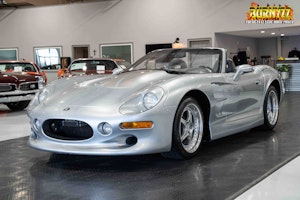


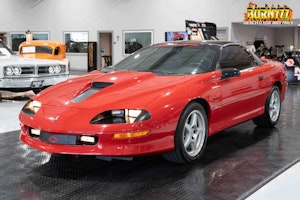

















I had a ’74 2 litre with a 4 speed, repainted from the metallic copper to black. It was a great little car, and I really loved it. I wouldn’t mind having another, but as the article notes, very few have survived in the U.S. The best thing about that engine is that it was a non-interference design, so when my timing belt broke, the car stopped, but the valves were not damaged!
The Capri and the Opel Manta were definitely the Mustang/Camaro of Europe at the time.
“You are posting comments too quickly. Slow down.” Really?
I saw two gorgeous examples, one yellow, one blue, in Ely (near Cambridge) in May. I was not able to photograph them because there were driving by but they sounded great and on a sunny day were just a motoring joy. Nice feature article.
You mentioned that Mitsubishi owned the rights to the Colt name, so by extension, Plymouth. I ran Pro rallies in a Dodge Colt, as did Manny others. I think the Plymouths were called “Arrows”.
Alongside the Hillman Avenger, aka Cricket by Plymouth was the Dodge Colt by Mitsubishi. Both fun cars especially for autocrossing but nowhere near as fun or nice as a Capri of any era.
The high school friend that I rented a house with after college had a blue one. This would have been around 1981 or so. His had a V6, seems like it was a 2.6L. Anyway – like a lot of our cars, it had a lumpy cam, bigger carb, free-flowing raspy exhaust, and sat extremely low. It was so low that he had to drive down our gravel driveway with one set of tires on the high part in the middle and the other set on the edge (so he didn’t scoop up half the gravel as he rolled past). Quite the little hotrod, and a true blast to go have fun in the twisties with.
J Mackro -I don’t know of any year factory V-8 Capris sold here in the US. The Cologne V-6 was something of a heavier lump at around 380 lbs, while a similar 302 would come in at about 410- 420. So it really didn’t upset the balance too much or really at all. Certainly not to the point of being a power v handling compromise. Also, besides being less attractive, the later US spec bumpers were surprisingly heavy. So much so that by simply removing just the front any weight penalty would be negated. And, since you’re doing it , the simple usual suspension upgrades will make a V-8 conversion handle much better than a stock 4 or six.
This Capri drives “good” ..??!
(Can we not get native English-speakers to write for Hagerty??]
( ps ) as mentioned the wider track of a Mk II helps as well. And, while I love both, the hatchback design of the Mk II is much more user friendly. In a pinch you can comfortably camp out in the back with an..acquaintance if need be.
I camped out in the back of my 76 Capri II, blue with sunroof over black interior all through the east coast of Canada. I later put a large air dam on the nose and the aluminum louvers on the hatch glass. That air dam dropped the top speed to 110 mph but it sure stuck in the corners. My 71 2L 4 was also a great handling car. not as fast but I’d have one in a flash if I could find a good one.
Bought a ’74 Capri in ’74 for $3300. Had lots of fun in that car. My first small car so the handling was WAY better than any previous car. Wasn’t the rust bug that took it out though. Winter of 1980, an icy, off camber corner slid us into a fairly large tree….. totaled. Not a happy day.
Had a ‘66 Mustang fastback, 289 and a four speed. Also had a ‘76 German Capri V6 and a ‘72 Opel Manta Rallye. No comparison between the Mustang and the other two — I’d much rather have the Capri or the Opal. Both were great cars to drive, especially on a twisty back road. I’m really sorry I didn’t have a way to keep those cars — can’t find a replacement today.
I bought a 72 2600 4 speed new and had a ball with it. While it was fun to drive, it was not very durable. It was rusting out by the time it was three years old and the bumpers could be twisted by hand. While it was beautiful wnen new, it was cheaply made.
My favorite car that I had ever owned was a 1974 Capri. It was a 2.8 V6, four speed. Mine also had Dobi headers, duel exhaust, and a weber carb. It was loud, raw, dangerous, and absolutely glorious. I would have it again in a minute. Stone age technology and feather light weight, a perfect combo.
Dual exhausts.
I bought a second hand 1976 John Player Special with the 2.8. Very nice little car.
Traded in a ’74 Pinto automatic for a Capri remarkably like the one in the article but not the GT. V6 stick and that thing surprised me…to say the least. Quick, nimble sporty but small and we were starting a family then, in ’75. My problem with it was speeding tickets….yes, and I have never had a history of that, before or since. It would quickly get to 110, but my tickets were in town. Sold it to a coworker with a warning and within a year he sold it too, for the same reason. Replaced it with a ’73 Cougar xr7, good but not nearly as nimble. Of all my cars over the years its the one I’d most like back in the condition sold. Really loved that quick and nimble little car.